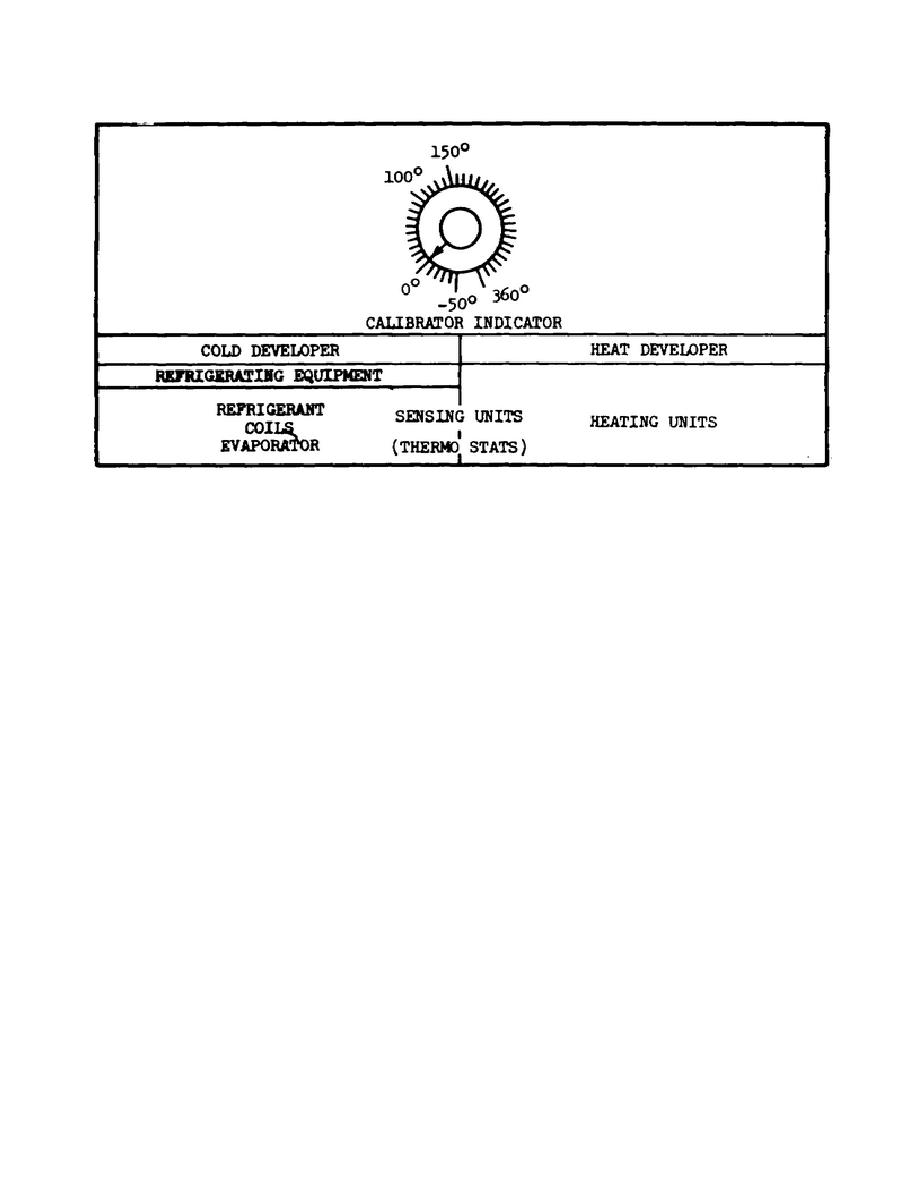
SM0486
Figure 10.
Thermometer calibrator.
d. No attempt is made in figure 10 to duplicate any of the calibrators you
may have seen.
We want you to become familiar with the basic components of a
typical thermometer calibrator and the purpose of these components.
The scale
shown in figure 10 illustrates some limitations of the typical calibrator.
Calibration checkpoints on the scale of the thermometer calibrated must be within
the limits of the calibrator scale.
e. Comparing the limits of the calibrator scale of figure 10 with the ranges
of the mercury-in-glass and alcohol-in-glass thermometers listed in table 4, you
see that all points on the scale of the mercury-in-glass thermometer are within the
range of the calibrator.
Even though the lower limit of alcohol-in-glass
thermometer scale is lower than that of the calibrator, the alcohol-in-glass
thermometer can be calibrated at the minimum limit of its calibrator and maximum
point of the thermometer.
NOTE:
When the boiling point of alcohol is attained, the thermometer may
explode.
f. The calibrator's operating principle is simple.
The instrument contains
the components necessary for a refrigeration unit.
Since cold is the absence of
heat, a refrigerant is used in the refrigeration unit to remove heat as necessary.
The amount of heat removed and the degree of cold reached depends on the position
of the calibrator indicator. The position of the indicator determines the amount
of refrigeration just as the thermostat in your home refrigerator determines the
amount of refrigeration and the degree of coldness.
g. To calibrate thermometers at or near the boiling point of water, you
adjust the necessary controls on the calibrator so that the refrigeration unit is
replaced by heating units.
Just as you selected the degree of coldness with the
calibrator indicator, you select the temperature (intensity of heat)
20



 Previous Page
Previous Page
